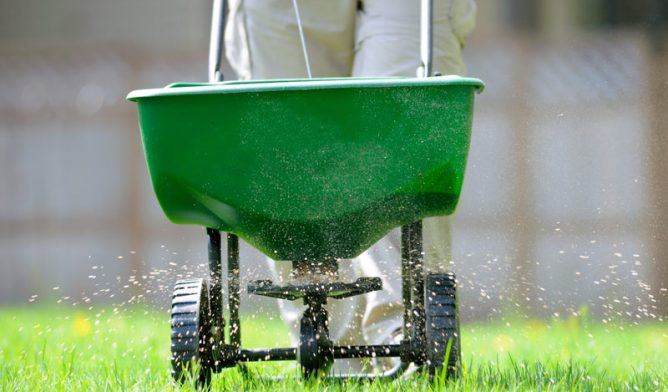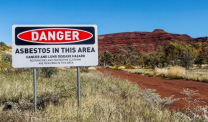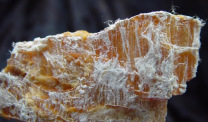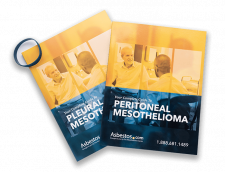Court Reopens Case Linking Lawn Fertilizer to Mesothelioma
Asbestos Exposure & BansWritten by Matt Mauney • Edited By Walter Pacheco
Asbestos.com is the nation’s most trusted mesothelioma resource
The Mesothelioma Center at Asbestos.com has provided patients and their loved ones the most updated and reliable information on mesothelioma and asbestos exposure since 2006.
Our team of Patient Advocates includes a medical doctor, a registered nurse, health services administrators, veterans, VA-accredited Claims Agents, an oncology patient navigator and hospice care expert. Their combined expertise means we help any mesothelioma patient or loved one through every step of their cancer journey.
More than 30 contributors, including mesothelioma doctors, survivors, health care professionals and other experts, have peer-reviewed our website and written unique research-driven articles to ensure you get the highest-quality medical and health information.
About The Mesothelioma Center at Asbestos.com
- Assisting mesothelioma patients and their loved ones since 2006.
- Helps more than 50% of mesothelioma patients diagnosed annually in the U.S.
- A+ rating from the Better Business Bureau.
- 5-star reviewed mesothelioma and support organization.
Testimonials
My family has only the highest compliment for the assistance and support that we received from The Mesothelioma Center. This is a staff of compassionate and knowledgeable individuals who respect what your family is experiencing and who go the extra mile to make an unfortunate diagnosis less stressful. Information and assistance were provided by The Mesothelioma Center at no cost to our family.LashawnMesothelioma patient’s daughter
How to Cite Asbestos.com’s Article
APA
Mauney, M. (2020, October 16). Court Reopens Case Linking Lawn Fertilizer to Mesothelioma. Asbestos.com. Retrieved April 15, 2024, from https://www.asbestos.com/news/2018/03/01/lawn-fertilizer-mesothelioma-lawsuit/
MLA
Mauney, Matt. "Court Reopens Case Linking Lawn Fertilizer to Mesothelioma." Asbestos.com, 16 Oct 2020, https://www.asbestos.com/news/2018/03/01/lawn-fertilizer-mesothelioma-lawsuit/.
Chicago
Mauney, Matt. "Court Reopens Case Linking Lawn Fertilizer to Mesothelioma." Asbestos.com. Last modified October 16, 2020. https://www.asbestos.com/news/2018/03/01/lawn-fertilizer-mesothelioma-lawsuit/.

A New Jersey appeals court has reopened a 2012 lawsuit alleging a man developed mesothelioma from using asbestos-contaminated Scotts lawn fertilizer.
The decision comes after the discovery of new evidence the appeals court believes “would probably have changed the result” of the 2014 summary judgment in favor of Scotts.
The original plaintiff, Lorenz Brandecker, filed the lawsuit in July 2012. The Wayne, New Jersey, resident claimed his twice-yearly use of Scotts Turf Builder fertilizer from 1967 to 1980 caused him to develop mesothelioma, a terminal cancer.
According to a report from the National Asbestos Exposure Review (NAER), a project of the Agency for Toxic Substances and Disease Registry (ATSDR), the Scotts Company used the mineral vermiculite in its consumer products as a carrier and filler until 2001.
From 1967 to 1980, Scotts used vermiculite from a mine in Libby, Montana, that contained deadly asbestos.
The Scotts facility in Marysville, Ohio, exfoliated approximately 430,000 tons of Libby vermiculite during those years. The site was included in the ATSDR Phase 1 evaluations and was listed as a U.S. Environmental Protection Agency (EPA) further action site.
Brandecker died in October 2012. His wife took over the suit as the executrix of the estate.
New Evidence Reveals Vintage Fertilizer Samples
In the initial trial, Brandecker’s lawyers asked Scotts to provide samples of its fertilizer products manufactured with vermiculite from Libby.
The lawn care company said it had a Turf Builder vermiculite sample, but it could not determine when it was produced or where the vermiculite came from. In 1980, Scotts switched to using vermiculite ore from South Carolina, Virginia and South Africa.
The trial judge approved a motion to bar all or portions of testimony from Brandecker’s four expert witnesses because the opinions were based on documents from W.R. Grace’s Zonolite vermiculite attic insulation and not Scotts fertilizer.
Scotts filed a separate motion for summary judgment, which was granted on Jan. 10, 2014.
However, a few months later it was revealed Scotts had 26 “vintage” samples of Turf Builder products believed to be manufactured with Libby vermiculite. Some of those samples were presented in a separate 2015 case.
Scotts claims the samples were “categorized and stored” by their attorneys in 2006 and “rediscovered” in Spring of 2014, according to the appeals court report.
In July 2015, the counsel for Brandecker’s estate filed a motion to reopen the case. In the appeal, the plaintiff’s lawyers claimed the 26 samples constituted new evidence and that Scotts made misrepresentations in discovery for the first trial.
A pending decision from the trial court will determine if the plaintiff should be given addition time to file a motion addressing the effect of the discovery violation and summary judgement orders.
Scotts Was a Major Consumer of Libby Vermiculite
According to EPA records, the Scotts facility in Marysville was the single largest U.S. consumer of vermiculite ore from the Libby mines.
Several types of asbestos contaminated the Libby vermiculite mines, including the amphibole asbestos varieties tremolite and actinolite. The NAER report said the mines also contained the asbestiform minerals winchite, richterite and ferro-edenite.
The EPA and the International Agency for Research on Cancer classify all forms of asbestos as carcinogenic. Inhaling or ingesting microscopic asbestos fibers can cause serious health conditions such as asbestosis and mesothelioma.
Most asbestos-related diseases are diagnosed many years — typically decades — after initial asbestos exposure. Brandecker was diagnosed with mesothelioma in March 2012, approximately 45 years after he began using the Scotts fertilizer product in question.
Scotts used a process called exfoliation to heat and separate non-vermiculite materials from the vermiculite used in its fertilizer.
The vermiculite was then “trionized” by coating it with a polymer resin called urea.
Scotts contends that even if asbestos fibers remained after exfoliation, the trionization process coated the vermiculite, making it safe.
In July 2017, a state court in Los Angeles ruled in favor of Scotts in a separate lawsuit attempting to link Turf Builder to mesothelioma. That case is on appeal.







